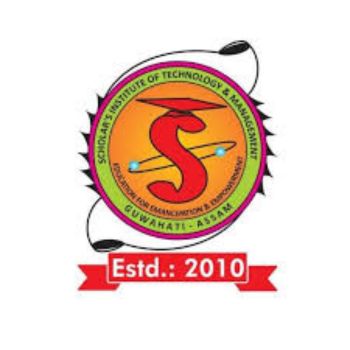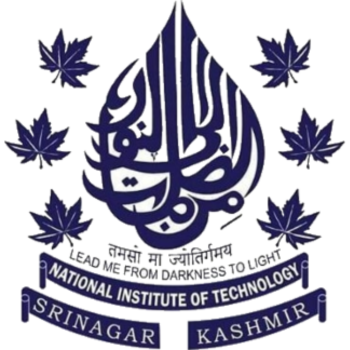The Federal Institute of Science and Technology (FISAT) has established a strong placement record, offering students excellent opportunities to launch their careers in engineering, technology, and management. The institute’s dedicated Training and Placement Cell works closely with leading national and international companies to provide internships, campus recruitment drives, and skill development programs. FISAT students benefit from industry-oriented training, soft skills workshops, and career guidance, ensuring they are well-prepared to meet professional demands. With a focus on practical experience and corporate exposure, FISAT continues to maintain high placement rates across its B.Tech, M.Tech, MCA, and MBA programs.
FISAT Placement Overview
| Branch/Course | Avg Package (LPA) | Highest Package (LPA) | % Placed / No. Placed | College Avg Placement (LPA) | Additional Info | Student Review on Placement Data |
| B.Tech Computer Science & Engineering | 5-6 | 11 | 80-85% | 5.2 | Top recruiters: Infosys, TCS, Wipro | CSE students get better placement opportunities compared to other branches |
| B.Tech Electronics & Communication Engineering | 4-5 | 9 | 75-80% | 5.2 | Core companies like Bosch, Siemens participate | Decent placements for ECE with mixed core/IT roles |
| B.Tech Electrical & Electronics Engineering | 4-4.5 | 7 | 70-75% | 5.2 | Limited core electrical roles available | Most EEE students opt for higher studies or IT sector |
| B.Tech Mechanical Engineering | 3.5-4.5 | 6.5 | 65-70% | 5.2 | Automotive companies like Mahindra recruit occasionally | Placements highly dependent on market conditions |
| B.Tech Civil Engineering | 3-4 | 5.5 | 60-65% | 5.2 | Construction companies like L&T visit campus | Fewer companies compared to CS/ECE branches |
| MBA | 4-5 | 8 | 70-75% | 4.8 | Finance & marketing specializations preferred | Average placements with regional companies dominating |
| MCA | 3.5-4.5 | 7 | 60-70% | 4.2 | IT sector placements common | Smaller companies offer entry-level developer roles |
FISAT Branch-Wise Performance Insights
- Computer Science & Engineering (CSE) CSE consistently leads in placement metrics, with 80-85% of students securing roles in IT giants like Infosys and Wipro. The branch benefits from high demand for software developers, with top performers reaching annual packages of INR 11 LPA. Students highlight the advantage of dedicated coding workshops and hackathons organised by the placement cell to bridge skill gaps.
- Electronics & Communication Engineering (ECE) ECE students see a 75-80% placement rate, with recruiters including both core electronics firms (Bosch, Siemens) and IT companies. The average package of INR 4-5 LPA reflects the dual demand for hardware and software roles. Core sector opportunities, though limited compared to IT, attract students interested in embedded systems and IoT.
- Electrical & Electronics Engineering (EEE) With 70-75% placement rates, EEE graduates often pivot toward IT roles due to fewer core electrical opportunities. The trend toward higher studies or certifications in automation and renewable energy is notable, driven by the evolving energy sector.
- Mechanical & Civil Engineering Mechanical engineering placements fluctuate with industry cycles, averaging INR 3.5-4.5 LPA. Automotive and manufacturing firms like Mahindra participate selectively. Civil engineering faces similar challenges, though infrastructure giants like L&T recruit for project management roles. Both branches emphasise internships to enhance practical exposure.
- Management & Computer Applications MBA graduates secure roles in finance and marketing at regional firms, with occasional placements in national banks. MCA students typically enter IT support or development roles, with smaller firms offering initial career footholds.
FISAT Strategic Placement Processes
FISAT’s Placement and Training Cell (PTC) adopts a three-tiered approach:
- Skill Development: Mandatory soft-skills training (100+ hours) and technical bootcamps in programming languages like Python and Java.
- Industry Collaboration: Regular guest lectures by professionals from firms like IBM and SAP, coupled with live projects in partnership with companies.
- Recruitment Drives: Multi-tiered selection processes including aptitude tests, technical interviews, and HR discussions. The institution’s Train the Trainer initiative ensures faculty stay updated on industry expectations, directly benefiting curriculum design.
FISAT Emerging Sectoral Trends
- IT Dominance: 60% of placements stem from IT/ITES firms, aligning with national hiring trends.
- Core Sector Revival: Increased recruitment in electronics and automotive sectors reflects government infrastructure pushes.
- Startup Engagement: Kochi’s startup ecosystem provides alternative opportunities in product management and tech roles.
FISAT Student Preparedness Initiatives
- Mock GD/PI Sessions: Weekly practice for group discussions and interviews.
- Internship Mandates: All students complete at least one industry internship, often leading to pre-placement offers.
- Research Integration: Final-year projects focused on AI/ML applications increase visibility in niche recruitments.
FISAT Comparative Industry Positioning
While FISAT’s highest packages remain below premier institutions like NITs, its consistent 70%+ placement rate across branches outperforms many state engineering colleges. The focus on holistic development—combining technical proficiency with communication skills—makes graduates adaptable to diverse roles.
FISAT Future Outlook
The placement cell plans to expand its recruiter base in emerging areas like data analytics and EV manufacturing. Strengthening alumni networks and international placement partnerships remain key priorities to elevate global opportunities. Prospective students should consider branch-wise placement trends alongside personal aptitude. While CSE offers immediate ROI, mechanical and civil engineering provide long-term growth in infrastructure sectors. FISAT’s balanced approach ensures every dedicated student graduates industry-ready, equipped to navigate India’s dynamic job market.








